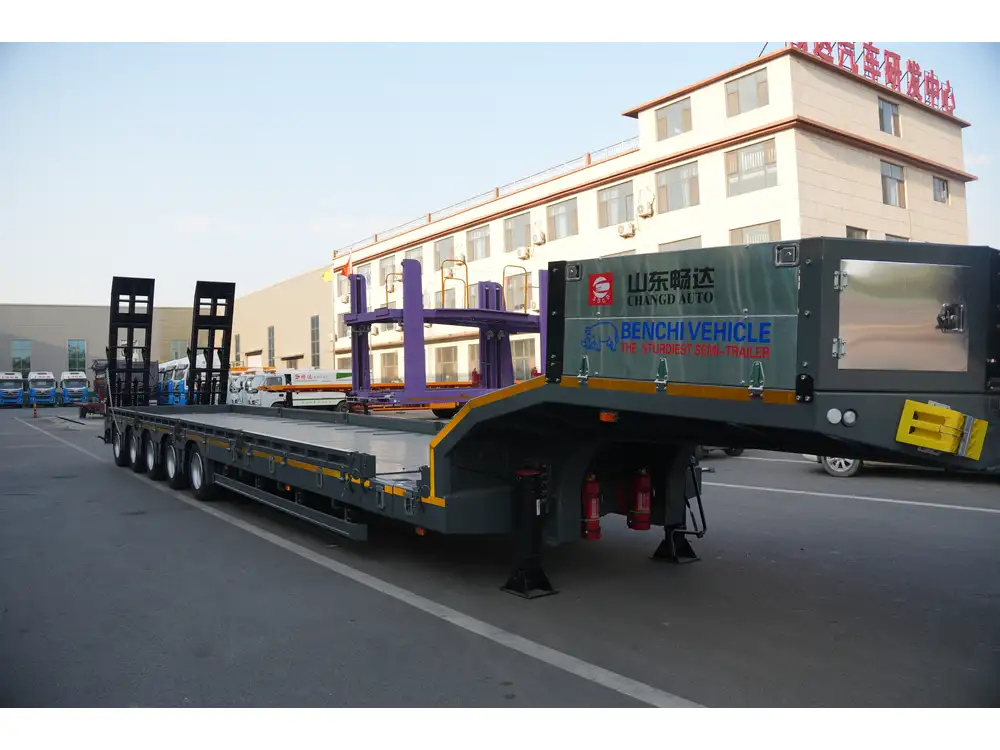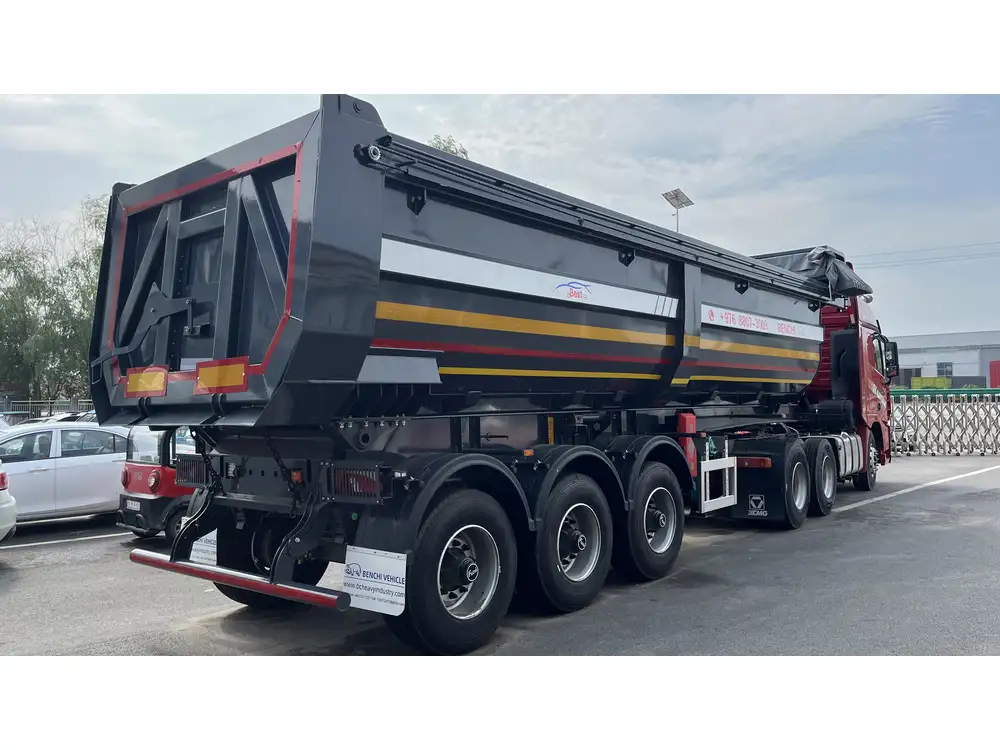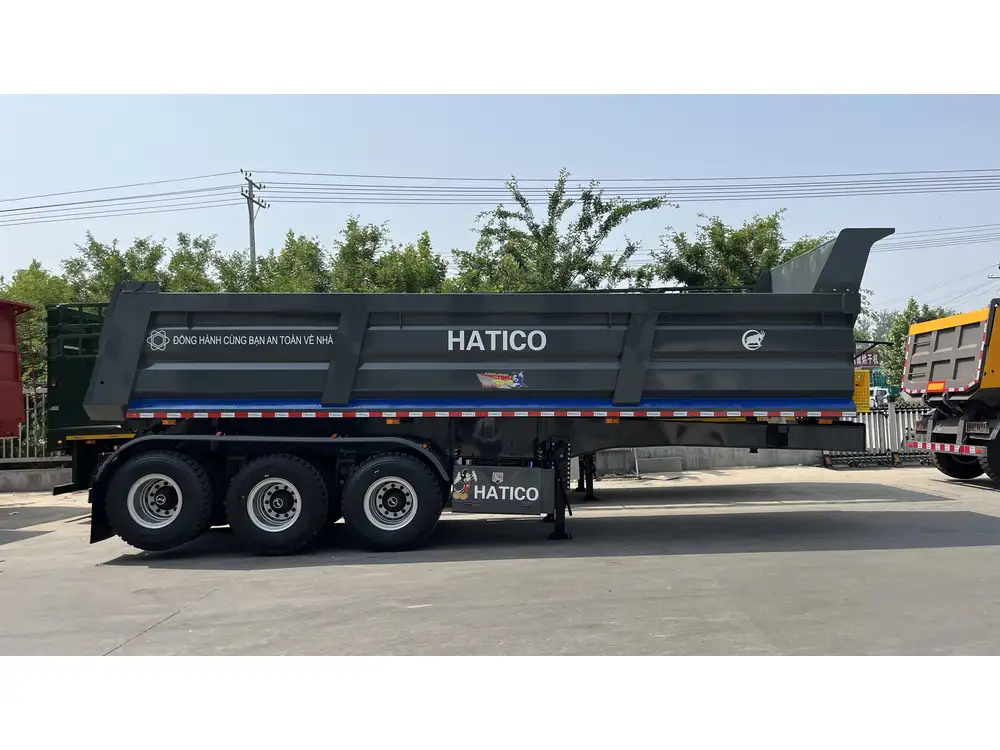The Importance of Knowing Semi-Trailer Heights
In the logistics and transportation industry, understanding the height of semi-trailers is not merely a trivial pursuit; it is a fundamental aspect that impacts safety, efficiency, and regulatory compliance. Choosing the appropriate semi-trailer height can influence load stability, bridge clearances, and overall vehicle performance on various roads. Therefore, as a manufacturer committed to quality and reliability, we must delve deep into the multifaceted implications of semi-trailer heights.
Standard Semi-Trailer Heights: Dimensions That Matter
When talking about the height of semi-trailers, it’s imperative to consider several standard dimensions which typically range:
| Type of Trailer | Average Height | Maximum Allowed Height (U.S.) |
|---|---|---|
| Standard Van Trailer | 13.6 feet (4.1 m) | 13.6 feet (4.1 m) |
| Reefer Trailer | 13.6 feet (4.1 m) | 13.6 feet (4.1 m) |
| Flatbed Trailer | 5.0 – 8.0 feet (1.5 – 2.4 m) | 8.5 feet (2.6 m) |
| Drop Deck Trailer | 10.0 – 11.0 feet (3.0 – 3.4 m) | 11.0 feet (3.4 m) |
| Heavy Haul Trailer | 6.0 – 10.0 feet (1.8 – 3.0 m) | Varies by state regulations |

Legal Restrictions by Region
It is essential to be aware of the legal limitations imposed on trailer heights across different geographical locations. For instance, in the United States, federal regulations stipulate a maximum height of 13.6 feet (4.1 m) for trailers, but individual states might impose stricter limitations. Conversely, some regions may allow for additional height if specific permits are obtained, especially for specialized equipment.
Consequently, adopting a comprehensive understanding of both state and federal regulations can steer clear of potential fines and operational setbacks.
Impact of Height on Load and Stability
Low-Profile vs. High-Profile Trailers
Selecting between low-profile and high-profile trailers has critical implications for vehicle handling and load stability. A low-profile trailer, generally around 5 to 8 feet in height, allows for a lower center of gravity, enhancing stability and reducing the risk of tipping, especially when navigating sharp turns or uneven terrains. High-profile trailers, often 13.6 feet, provide increased cargo capacity but may result in heightened wind resistance, leading to potential handling challenges during adverse weather conditions.
| Feature | Low-Profile Trailers | High-Profile Trailers |
|---|---|---|
| Center of Gravity | Lower, promotes stability | Higher, potentially less stable |
| Wind Resistance | Reduced, better handling | Increased, risks compromise safety |
| Cargo Volume | Limited, but efficiently managed | Greater, accommodates larger loads |

The Balance Between Capacity and Safety
Striking a balance between cargo capacity and safety requires a meticulous approach. While a taller trailer can carry more extensive loads, it increases risks associated with brake performance, wind resistance, and rollover potential. Thus, transporters must evaluate their specific needs, considering cargo type, route conditions, and vehicle capabilities.
Navigating Bridge Clearances: A Practical Perspective
Assessing Route Suitability
One of the critical evaluations truck drivers and logistics managers must undertake involves assessing route suitability based on trailer heights. When planning a route, it is vital to factor in bridge clearances and overpasses that may impose height restrictions. The repercussions of failing to adhere to these clearances can lead to accidents, costly damages, and significant delays.
| Tool/Method | Description | Advantages |
|---|---|---|
| Mobile Apps | Use GPS-based applications to identify height-restricted routes. | Real-time data, user-friendly |
| Maps and Charts | Refer to physical maps highlighting clearance information. | Provides comprehensive route planning |
| Consult Local Agencies | Seek information from state transport offices. | Accurate, tailored route information |

Height-Related Restrictions
Understanding specific restrictions on roadways based on trailer height is paramount. Local municipalities may implement unique regulations on specific routes, including:
- Weight Limits: Some regions may limit weight for high trailers, affecting load capacity.
- Time Regulations: Certain overpasses may be closed at specific times for maintenance.
- Seasonal Restrictions: Ice and flooding can restrict trailer heights during adverse weather conditions.
The Role of Technology in Height Measurement
Advanced Measurement Solutions
The integration of technology into logistics operations has revolutionized how height is measured and managed. Innovative solutions such as laser measuring systems can guarantee accurate height assessments of both loads and trailers, mitigating risks associated with underestimating or overestimating dimensions.
| Technology | Usage | Benefits |
|---|---|---|
| Laser Measuring System | Measure the height of loads efficiently. | Accuracy, reduces human error |
| 3D Scanning | Provides a comprehensive view of load dimensions. | Ideal for complex load shapes |
| Apps for Compliance | Mobile solutions that notify height restrictions. | Real-time updates, enhances planning |

GPS-Integrated Vehicle Systems
Modern trailers equipped with GPS and smart technologies can relay real-time height data, ensuring that logistics professionals are always informed about any potential challenges en route. By using these technologies efficiently, truck operators can avoid height-related fines and damages.
Semi-Trailer Customization Options: Adapting to Needs
Tailoring Height for Specific Industries
In manufacturing semi-trailers, offering customization options based on industry-specific requirements is crucial. Industries such as construction, food transportation, and automotive have distinct needs regarding height:
- Construction: Low-profile trailers for heavy machinery transportation.
- Food Services: Reefer trailers with standard heights for optimal loading conditions.
- Automotive: Specialized trailers with adjustable heights to accommodate varying vehicle types.

Innovative Solutions for Height Challenges
In addressing height challenges, some manufacturers are exploring innovative designs, such as:
- Extendable Trailers: Designed for versatility, allowing adjustments based on cargo requirements.
- Air Ride Suspension Systems: Enhances ride quality and can adapt vehicle height depending on load weight.
| Customization | Application | Key Benefits |
|---|---|---|
| Extendable Trailers | Varying lengths and heights based on loads. | Flexibility, utility |
| Air Ride Systems | Adjust height per load weight, improving balance. | Enhances stability, better handling |
Future Trends in Semi-Trailer Heights and Standards
Regulatory Changes on the Horizon
As transportation continues to grow, emerging trends and regulations may alter traditional practices concerning semi-trailer heights. Awareness of these potential changes will be essential for manufacturers and logistics professionals alike. Notable trends include:
- Increased Regulation: Stricter compliance with height regulations as safety standards evolve.
- Sustainability Initiatives: Attention to maximizing load capacity while minimizing the overall environmental footprint.

Innovations in Trailers
With the onset of electric trucks, new design approaches will likely accompany innovative trailer developments. As companies seek to improve fuel efficiency and performance, understanding height’s role in the electric vehicle landscape will become paramount.
Conclusion: Height as a Functional Metric in Semi-Trailer Logistics
In the semi-trailer manufacturing and logistics landscape, height serves as a pivotal metric influencing safety, efficiency, and operational costs. By remaining cognizant of regulatory standards, customizing solutions based on specific industry needs, and embracing technological advancements, carriers can enhance their transportation strategies.
Whether a small fleet or a large logistics provider, aligning semi-trailer heights with operational goals and compliance requirements enables optimized performance. Future-oriented solutions and measurements will undoubtedly shape the trajectory of the transportation industry, and a thorough comprehension of these elements is indispensable. In an environment anchored in evolving standards, height will remain a critical variable that determines success in logistics operations.



